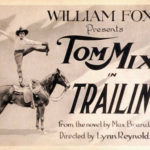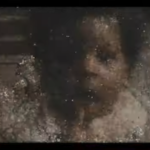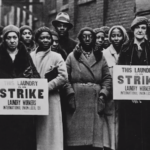The Scots Go to the Movies, and How
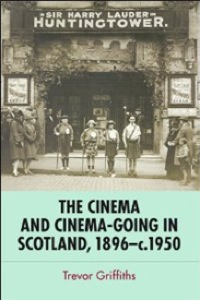 Trevor Griffiths had a wide-open research topic when he decided to write a book about Scottish film-going habits of the early 20th century and to set them in social and historical context.
Trevor Griffiths had a wide-open research topic when he decided to write a book about Scottish film-going habits of the early 20th century and to set them in social and historical context.
In his new book, The Cinema and Cinema-Going in Scotland, 1896-1950, from Edinburgh University Press, distributed in the US by Columbia University Press), Griffiths, an economic and social historian at the University of Edinburgh, presents the first study of its kind. He asks such questions as what Scots saw at the cinema; what was available and why; and what was the experience like?
He draws extensively on archival resources concerning the business and management of cinema, including attendees’ diaries and recollections. Fans’ reports provided him insight into patterns of cinema-going and attendance levels, as well as changes in audience preferences for various genres, stars, and national origins of films.
Griffiths’ earlier publications include The Lancashire Working Classes, c.1880-c.1930 (Oxford University Press, 2001) and the edition of essays, A History of Everyday Life in Scotland, 1800 to 1900 (Edinburgh University Press, 2010).
Griffiths explains the choice of his latest subject on his website: “In recent years, I have turned a long-standing passion for old, black and white films into a research interest, enabling me to justify long hours spent watching the films of Charlie Chaplin, Buster Keaton, and Laurel and Hardy, among others.”
He told Moving Image Archive News a little about how he did that, in the case of preparing his new book:
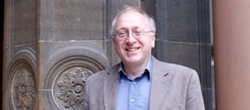 There had been very little work done on the primary documentation of Scottish film or cinema prior to the book, so all sections made heavy reliance on archival resources.
There had been very little work done on the primary documentation of Scottish film or cinema prior to the book, so all sections made heavy reliance on archival resources.
The films themselves in most cases sadly (from an academic, but probably not an aesthetic point of view) no longer exist. However, through detailed use of the Scottish trade press, I was able to discover four more titles of films that were previously, and probably deservedly if the press notices are to be believed, unknown.
The book therefore makes extensive use of paper archives, particularly at the Scottish Screen Archive, built up over the last 35 years or so by Janet McBain and her splendid staff. This is a great resource, bringing together many private papers as well as the records of national bodies, such as the Scottish Film Council.
The Archive also has records of individual businesses, which I was able to supplement with material in the National Archives of Scotland in Edinburgh, including returns to the Register of Dissolved Companies, which provides information on the finances and ownership patterns of many cinema businesses, and the records of important cinemas, including the largest cinema in Edinburgh, the Playhouse, with records of weekly attendances and films shown from its opening in 1929 to 1973.
The National Archives also contain valuable legal records, enabling me to reconstruct in some detail the production history of one lost Scottish film, the memorably titled Football Daft, which was the subject of a breach of copyright action.
The records of the Scottish Home Department were useful in reconstructing the debate over the Sunday opening of cinemas, an ongoing debate across the first half of the century.
The book also makes use of archives in Glasgow, Cumbernauld, Dundee, and London to broaden the coverage. The Cinema Museum in Lambeth, London, contains important documentation on early cinema in Aberdeen.
Finally, I made use of material in private hands when, after a seminar paper given in Glasgow, I was contacted by a former Glasgow resident, now living in Italy, who had her mother’s diaries from the 1920s and 1930s, which referred to her cinema-going and even made reference in some cases to the films she saw and her opinion of them.
It’s tempting to think that there is more of the same out there in private hands.
Previous Post: Movies on the Canadian Prairie
Next Post: New Books, and Lots of Them

